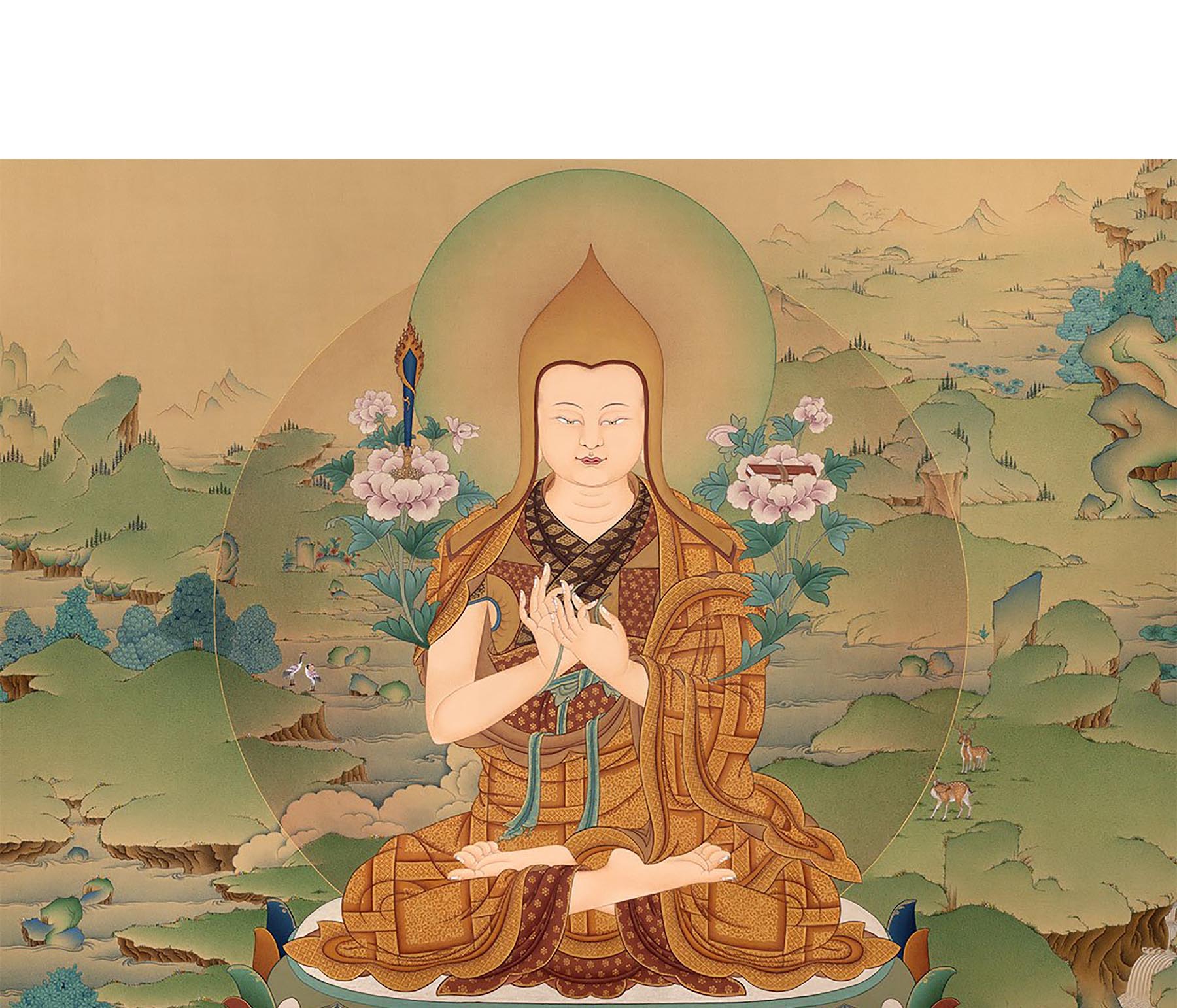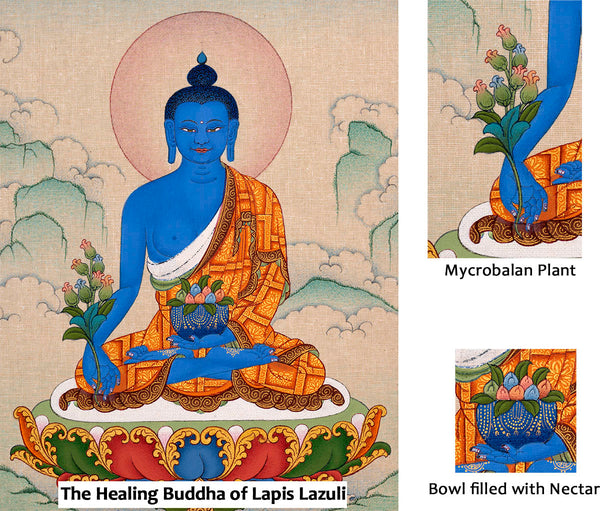Who is Tsongkhapa?
Je Tsongkhapa is one of the renowned and acknowledged masters of Tibet. Also known as Je Rinpoche the literal meaning is "Precious Master". He is considered as an emanation of Manjushri, the Bodhisattva of wisdom.
He founded the Gelug school of Tibetan Buddhism. Tsongkhapa mastered the teachings of many lineages and assembled his learning into the Gelug curriculum. They feature philosophy and debate along with advanced yogic and Tantric practices. He was born in the Amdo valley, in northeast Tibet. It is the same place where the Kumbum monastery was established to commemorate his birthplace.
Prediction of Tsongkhapa's Birth
It is believed that Shakyamuni Buddha and Padmasambhava both predicted Tsongkhapa's story. During the time of Shakyamuni, Tsongkhapa was a young boy. He offered Buddha a clear crystal rosary and received a conch shell in return. Buddha predicted that the boy in his later life will be born in Tibet and he will establish a great monastery.
Likewise, Padmasambhava also predicted that a fully ordained Buddhist monk would be born in east China. He would be as an emanation of a Bodhisattva and attain the bliss body (sambhogakaya) of Buddha. Later, the conch shell was unearthed while the building of Ganden Monastery in Lhasa in 1959. It was still available to see in the Drepung monastery. The crown still adorns the head of the Buddha in Lhasa at the Jokhang.

Tsongkhapa's Life events
At the age of 3, he took vows and at 7, received ordination as a novice monk. Tsongkhapa received the empowerment of Chakrasamvara, Hevajra, and Yamantaka within the next five years. He traveled to different parts of Tibet to study with many masters. When 16 years old, he journeyed to Drigung Monastery.
He studied Perfection of Wisdom philosophy, the Great Seal (Mahamudra). And also a range of principal Mahayana and Vajrayana texts, he studied. His fame began to spread and he began to transmit his knowledge to a growing number of disciples. He taught at many monastic colleges as Drigung, Samye, Zhalu, and Sakya.
When he was 33, he experienced his first encounter with the Bodhisattva Manjushri. He could experience Manjushri's presence directly and received teachings. So, Tsongkhapa is known as an emanation of the Bodhisattva of wisdom.
In 1398, he attained perfect enlightenment. In 1409, he established the Great Prayer (Monlam) Festival at Lhasa. In 1410, he founded a monastery and named it Ganden, "Joyous," after the Tushita Paradise of Maitreya. He served there as the first Throne-Holder of Ganden (Ganden Tripa). It was under his leadership, the Gelug sect. spread across Tibet and became the largest school of Tibetan Buddhism.
Je Tsongkhapa Thangka:

Yellow Hat, A Distinctive headgear of Tsongkhapa:
Tsongkhapa seats on a lotus on a moon disc. As portrayed here, he seats on an adamantine Vajra posture. Both of his hands are in teaching mudra. He wears an ornate robe and a conical yellow hat. This hat reassembles that of Bengali Pandita and is the distinctive headgear of Gelug. Hence, they are also known as the "Yellow Hat" sect.
Above his left shoulder, a lotus supports a Perfection of Wisdom text. And on his right shoulder, there is a lotus that supports a sword of wisdom. The book and the sword are the emblems of Manjushri. And hence proclaiming his identity with Manjushri.
On the bottom left to right, are Vaishravana displaying his mongoose and victory banner, six-armed blue Mahakala, and Yama Dharmaraja.
Yama is in his exoteric form as the buffalo-headed lord of death. He was brought under control by Manjushri and thus became important to Tsongkhapa and the Gelug pantheon.
Yama: The Buffalo Headed
He has an "outer" exoteric and "inner" esoteric form.
Yama, with his buffalo-head, helps to remove external obstacles. And protects practitioners from physical calamities and misfortunes. The "inner" Yama, as a protector, helps us from the inner obstacles and eases the spiritual progress toward enlightenment.
On the top is the Maitreya Buddha, with two attendants displaying the teaching mudra.
The deep blue background is inspired by the Chinese blue-green style. The embroidered Tsongkhapa's robes are finely detailed with golden motifs.
The outer bands of the garment are rendered in gold color.
The body aura and halo behind are in gold too with the shading of jewels embedded in between. There are the spiraling rays of light emitting as aura from the Tsongkhapa's body.
Sources: CIRCLE OF BLISS, Buddhist Meditational Art


